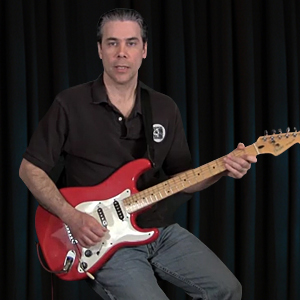Practicing Major Triads & Inversions Series 3
Description
In this tutorial we will use a backing track to systematically practice triad chords and their various inversion shapes on the D, G and B strings. Among the goals of this tutorial are integrate the theory of chord voicings and voicing motion with practicing and visualizing the specific shapes of triad chord inversions.
If you are unfamiliar with the concept of triad chord inversions, then I strongly suggest you review this tutorial which explicitly covers the theory of inversions and triad chord voicings:
Chord Theory: An Introduction
Introduction to Triads & Chord Inversions
We will use a backing track to practice these ideas using three major chords: A major, D major and E major. We will use the idea that a chord in it's most fundamental basic unit is only three notes: the 1st (root), 3rd and 5th from it's respective scale. Therefore, an A major chord is the 1st (root), 3rd and 5th from an A major scale.
A major scale:
A (1) - B (2) - C# (3) - D (4) - E (5) - F# (6) - G# (7)
A major chord:
A (1) - C# (3) - E (5)
Anywhere on any musical instrument you can isolate, find and play these three notes you have an A major chord.
From there we build chord inversions in order to achieve an A major chord in a variety of voicings for different sounds. We do the same to D major and E major chords. We find a place to play these chords on the D, G & B strings. Then we are ready to practice!
Lesson Info
Tutorial Lessons
- Introduction
- Root Position Triads
- Root Position Triads With A Backing Track
- First Inversion Triads
- First Inversion Triads With A Backing Track
- Second Inversion Triads
- Second Inversion Triads With A Backing Track
- Close Harmony Voice Motion
- Close Harmony Version 1 With A Backing Track
- Close Harmony Version 2
- Close Harmony Version 2 With A Backing Track
- Close Harmony Version 3
- Close Harmony Version 3 With A Backing Track
- Using All The Voicings!
- Using All The Voicings With A Backing Track
- Conclusion
